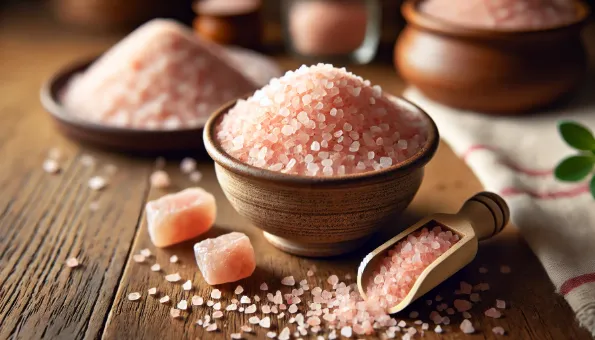Himalayan Pink Salt: Facts, Myths & Smart Use
A mineral-rich rock salt prized for color and crunch—use it for flavor, not as a miracle nutrient source.

What Is Himalayan Pink Salt?
Himalayan pink salt is a mined rock salt with a rosy hue from trace minerals like iron. It tastes like regular salt and is used for finishing dishes and seasoning.
Nutrition Profile
Like all salts, it’s **~98–99% NaCl**. Per gram it delivers roughly **~380–400 mg sodium**. Trace minerals (e.g., iron, calcium, potassium) are present but **nutritionally negligible at normal use**. Unless **iodized**, it provides **little to no iodine**.
Benefits
- **Flavor & texture:** crisp crystals for finishing.
- **Cooking control:** coarse grains can help dose salt more evenly.
- **Aesthetic appeal:** color can elevate presentation.
Possible Downsides
- **Blood pressure:** excess sodium can raise BP—keep portions moderate.
- **Not a meaningful mineral source:** the ‘trace minerals’ are too low to matter.
- **Iodine gap:** may **lack iodine** needed for thyroid unless iodized or paired with iodine-rich foods.
How to Use
- Use as a finishing salt on salads, eggs, grilled meats/veg.
- Dissolve in soups and stews like any salt; adjust to taste.
- If your diet is low in iodine, **mix with iodized salt** or ensure dietary iodine (e.g., sea fish, dairy, eggs).
Tip
Store in a dry, airtight container. For precise baking, use **fine grain** so it disperses evenly.
- 1. Himalayan Pink Salt
Nerafinirana kamena so s tragovima minerala; nije izvor joda osim ako je jodirana

